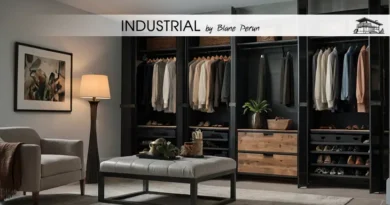Office Interiors
Elevating Your Workspace: A Dive into Modern Office Interior Design
In today’s fast-paced world, the design of your workspace can significantly influence productivity, creativity, and overall well-being. Office interior design is not just about aesthetics; it’s about creating an environment that reflects a company’s identity while catering to the functional needs of its employees. As we delve into the realm of modern office interior design, we’ll explore how innovative concepts and thoughtful layouts can transform mundane workspaces into dynamic and inspiring environments.

The Science Behind Effective Workspace Layouts
Ergonomics and Spatial Organization
When it comes to office interior design, understanding the principles of ergonomics is crucial. Ergonomics, or the study of people’s efficiency in their working environment, plays a pivotal role in designing a space that enhances comfort and reduces the risk of work-related injuries. By incorporating ergonomic furniture and optimizing spatial organization, designers can create an office layout that promotes health and increases productivity. Scientific research has shown that ergonomic chairs and adjustable desks can significantly impact employees’ physical health, reducing symptoms of musculoskeletal disorders such as carpal tunnel syndrome and chronic back pain.
Lighting and Productivity
Lighting is another critical aspect of office interior design that directly affects employees’ mood and efficiency. Studies in environmental psychology indicate that natural light can boost morale and decrease feelings of stress. Incorporating large windows, skylights, and strategically placed artificial lighting can mimic the natural diurnal light cycle, enhancing cognitive performance and fostering a more vibrant work atmosphere.
Innovative Materials and Sustainable Practices
Biophilic Design Elements
Biophilic design, which integrates natural elements into the built environment, has gained traction in modern office interior design. This approach not only brings a slice of nature indoors but also has been scientifically proven to reduce stress, enhance creativity, and improve cognitive function. Incorporating living walls, indoor water features, and natural materials like wood and stone can create a more harmonious and productive workspace.
The Role of Acoustics in Office Design
The acoustic environment of an office can significantly impact concentration and productivity. Technical terms such as sound masking and acoustic dampening are integral to creating a space that minimizes distractions and fosters focus. Innovative materials like acoustic panels and sound-absorbing ceiling tiles can mitigate noise pollution, making open-plan offices more conducive to individual work while still promoting collaboration.
Technology Integration in Modern Workspaces
Smart Office Solutions
In the digital age, integrating technology into office interior design is non-negotiable. Smart office solutions, including automated climate control, intelligent lighting systems, and ergonomic furniture with built-in technology, are transforming workspaces into more efficient and comfortable environments. These technological advancements not only streamline operations but also contribute to a more adaptable and responsive workspace.
Collaborative Spaces and Technology
The design of collaborative spaces within an office is crucial for fostering innovation and teamwork. Incorporating technology such as interactive whiteboards, video conferencing tools, and seamless connectivity options facilitates communication and collaboration among teams, regardless of their physical location. Designing these spaces with flexibility in mind allows for various configurations, accommodating everything from formal meetings to casual brainstorming sessions.
In the world of office interior design, creating spaces that are not only aesthetically pleasing but also functional and conducive to well-being is key. By incorporating ergonomic principles, natural elements, innovative materials, and cutting-edge technology, designers can craft workspaces that inspire and empower.

FAQs on Office Interior Design
What is the importance of office interior design?
Office interior design is crucial because it impacts employees’ productivity, health, and overall job satisfaction. A well-designed office can motivate employees, foster creativity, and reflect the company’s culture and values.
How does lighting affect office interior design?
Lighting plays a significant role in office interior design by influencing mood, energy levels, and productivity. Natural light is particularly beneficial as it reduces eye strain, improves mood, and enhances overall well-being.
What are some sustainable practices in office interior design?
Sustainable practices in office interior design include using eco-friendly materials, incorporating natural elements through biophilic design, optimizing energy consumption with smart technology, and designing flexible spaces that can adapt to changing needs.
How can technology be integrated into office interior design?
Technology can be integrated into office interior design through smart office solutions like automated lighting and climate control, ergonomic furniture with built-in tech features, and collaborative spaces equipped with digital tools for communication and creativity.
Why is acoustic design important in office interiors?
Acoustic design is important in office interiors to minimize noise distractions, enhance privacy, and improve sound quality for communication. This can be achieved through sound-absorbing materials, strategic layout planning, and specialized acoustic solutions.
Acoustic design in office interiors goes beyond mere noise reduction; it’s about creating a soundscape that enhances focus while still fostering a collaborative atmosphere. The use of materials such as high-density foam panels, carpeting, and modular office furniture plays a pivotal role in managing sound levels. Design strategies might include the strategic placement of quiet zones, collaboration areas, and sound-masking systems to balance the need for privacy with the desire for an open, interactive workspace.
The right acoustic environment can significantly reduce cognitive distractions, allowing employees to concentrate better and be more productive. Moreover, in spaces designed for teamwork and meetings, good acoustics ensure that communication is clear and effective, preventing misunderstandings and enhancing the overall workflow. Therefore, office interior design must consider the acoustic comfort of employees, integrating technical solutions that cater to various activities, from deep concentration tasks to dynamic group discussions.
In conclusion, the importance of office interior design cannot be overstated. It encompasses a vast array of elements, from ergonomic furniture and strategic lighting to biophilic elements and advanced technology integration, all of which contribute to a productive, healthy, and inspiring workplace. By paying close attention to the details, such as acoustic design and sustainable practices, businesses can create environments that not only boost efficiency but also promote well-being and job satisfaction among employees. A well-thought-out office interior design is a powerful tool in fostering a vibrant, dynamic work culture that attracts and retains top talent.





